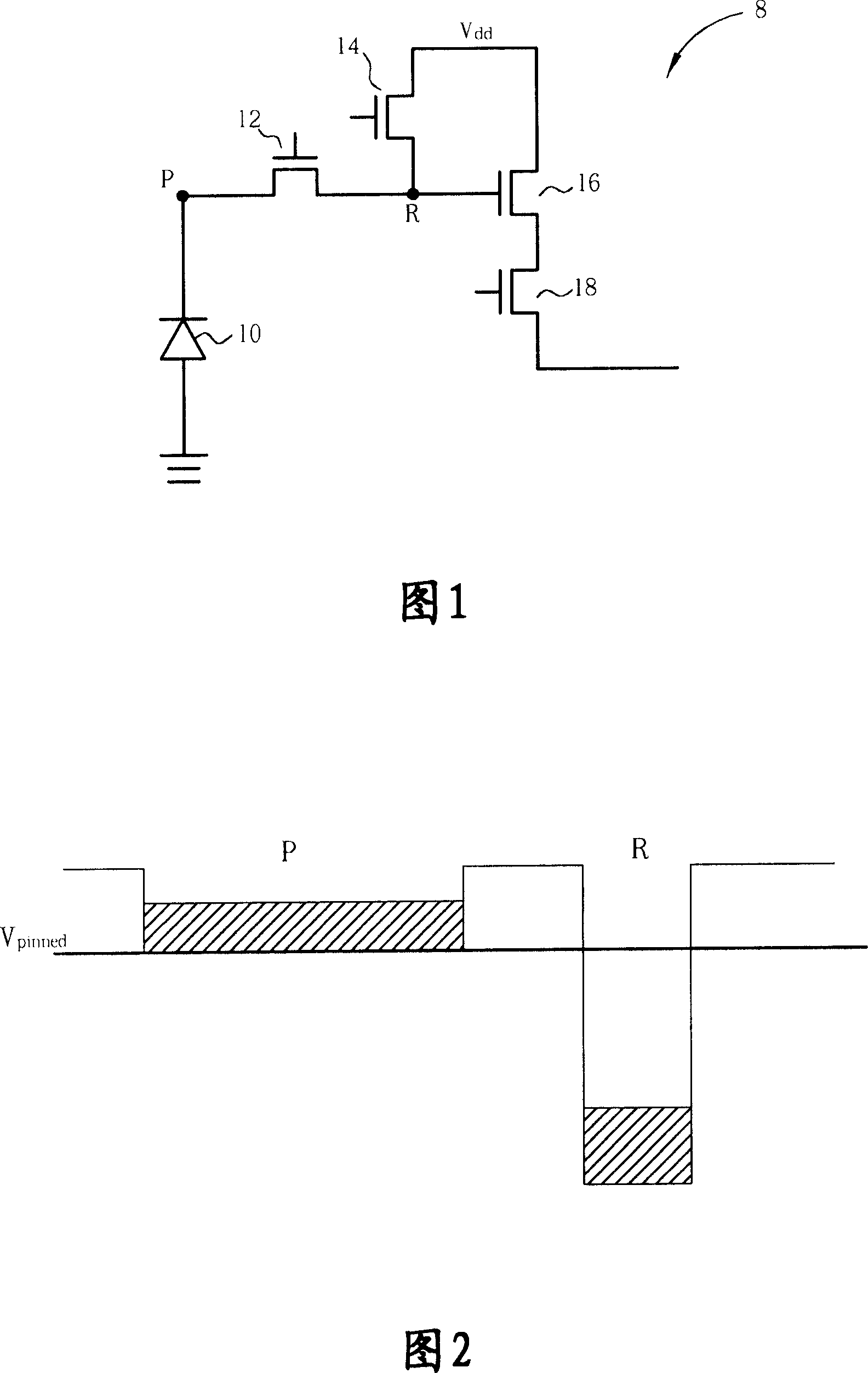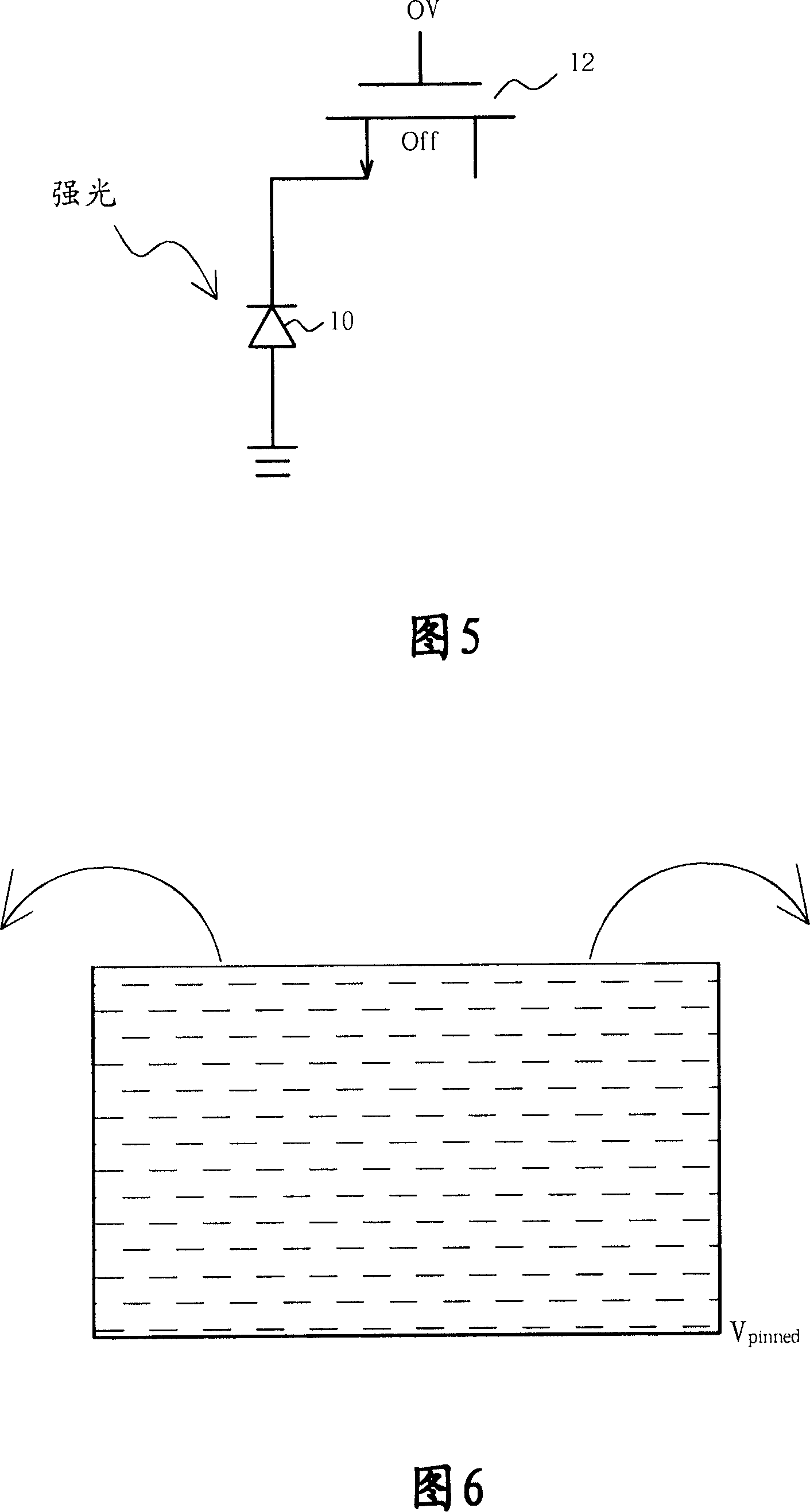Method for controlling light charge quantity of light sensing LED and its image sensor
A photodiode and image sensing technology, applied in lighting devices, electroluminescent light sources, light sources, etc., can solve the problems of difficult control process, halo phenomenon, image retention, etc., to avoid image retention and halo phenomenon, Low cost and accurate charge size
- Summary
- Abstract
- Description
- Claims
- Application Information
AI Technical Summary
Problems solved by technology
Method used
Image
Examples
Embodiment Construction
[0047] The present invention provides a method for controlling the amount of charge that can be stored in the clamped photodiode 10 to solve the problems of image retention and halo phenomenon in the prior art.
[0048] First, the concept of the present invention will be explained. Image retention occurs because the charge in the clamped photodiode 10 cannot be completely transferred. Therefore, if the charge capacity that can be stored in the clamped photodiode 10 is reduced, the image retention phenomenon can be avoided. In addition, the halo phenomenon is caused by receiving too much light charge, causing the light charge to overflow to surrounding pixels. Therefore, the generation of the halo phenomenon can also be reduced by controlling the charge capacity that can be stored in the pinched photodiode 10 .
[0049] Please refer to FIG. 8 . FIG. 8 is a schematic diagram of the switching transistor 12 and the clamping photodiode 10 . When supplied with a voltage V g When...
PUM
 Login to View More
Login to View More Abstract
Description
Claims
Application Information
 Login to View More
Login to View More - R&D
- Intellectual Property
- Life Sciences
- Materials
- Tech Scout
- Unparalleled Data Quality
- Higher Quality Content
- 60% Fewer Hallucinations
Browse by: Latest US Patents, China's latest patents, Technical Efficacy Thesaurus, Application Domain, Technology Topic, Popular Technical Reports.
© 2025 PatSnap. All rights reserved.Legal|Privacy policy|Modern Slavery Act Transparency Statement|Sitemap|About US| Contact US: help@patsnap.com



